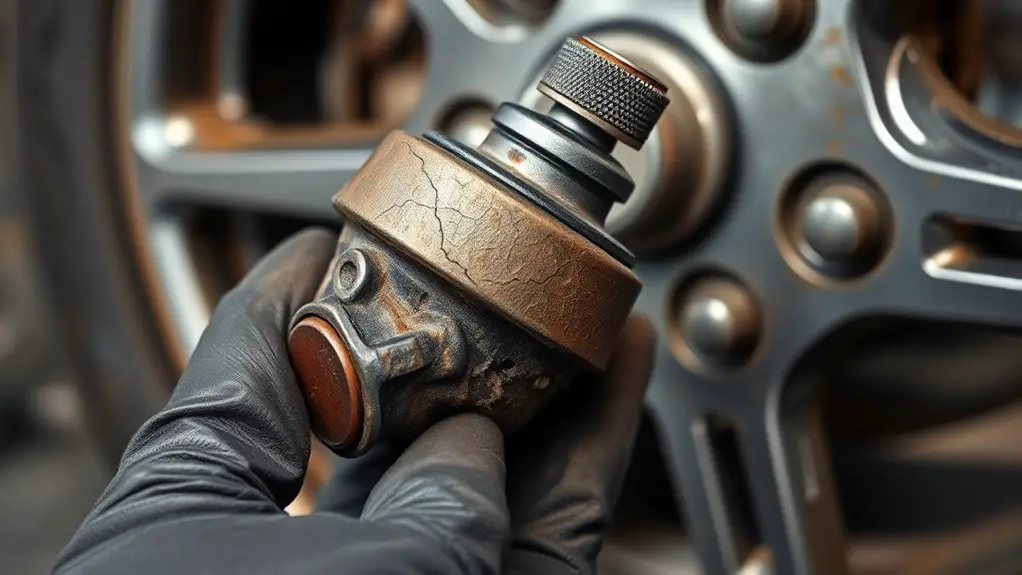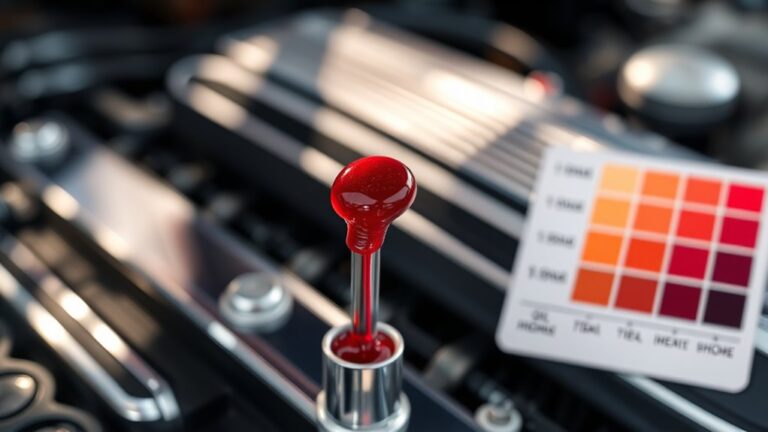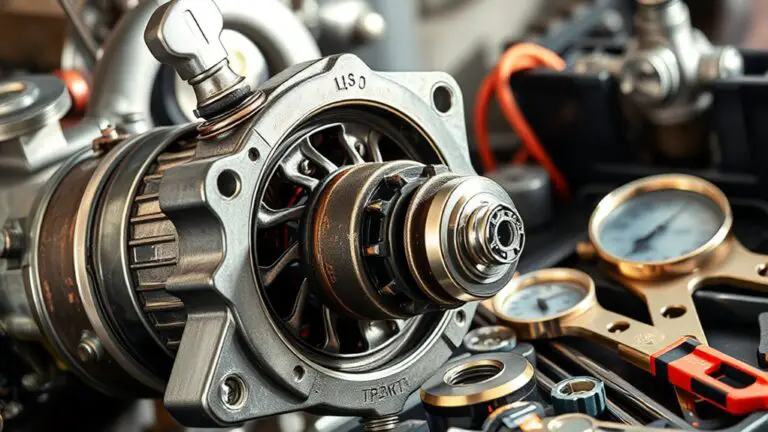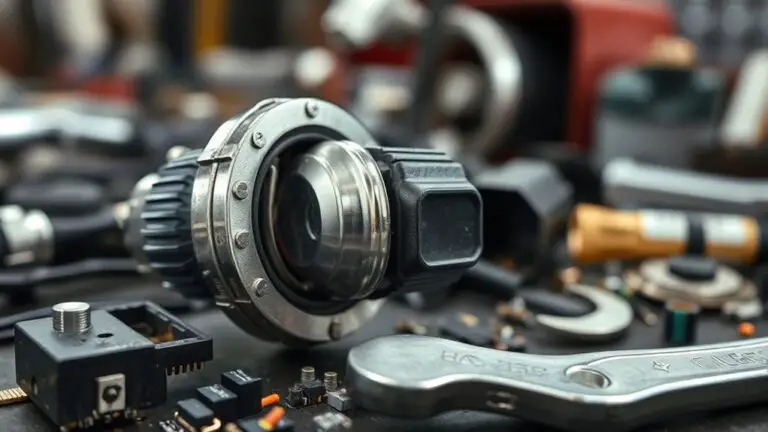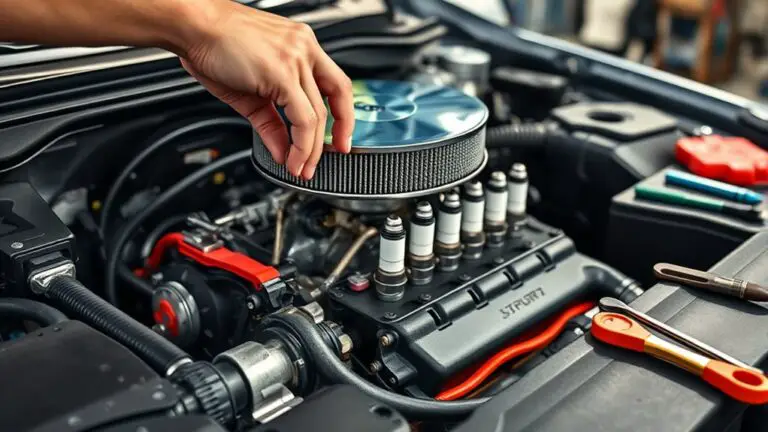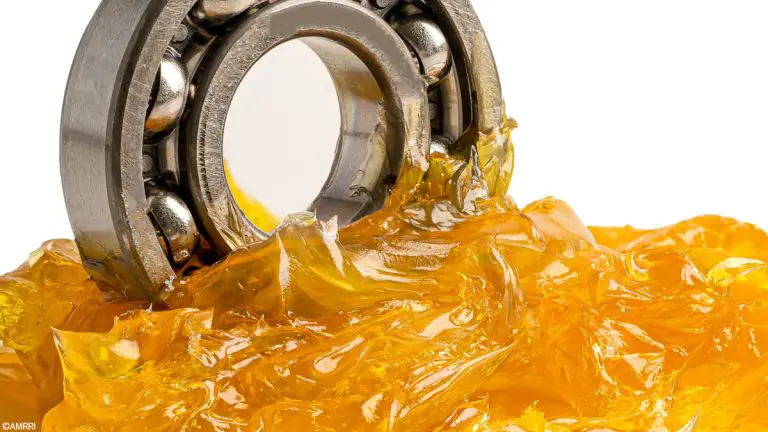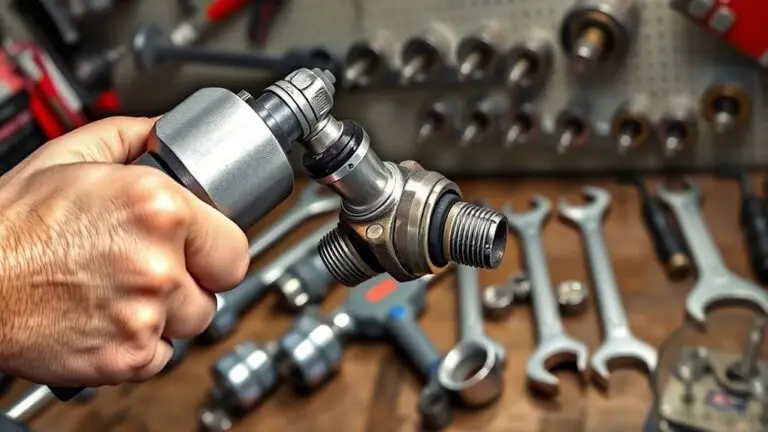Top Causes of Ball Joint Failure and Preventive Tips
Top causes of ball joint failure include wear from normal use, misalignment, harsh road conditions, corrosion, contamination, improper lubrication, and excessive loads. You’ll prevent trouble by inspecting boots for cracks, checking for grease leaks, and rechecking torque after installation. Stay alert for looseness, play, or unusual noises, and avoid aggressive steering or heavy loads on rough roads. Regular alignment checks after impacts help, and using quality seals and grease suited to climate matters too. More tips await if you keep exploring.
Wear and Tear: How Ball Joints Degrade Over Time
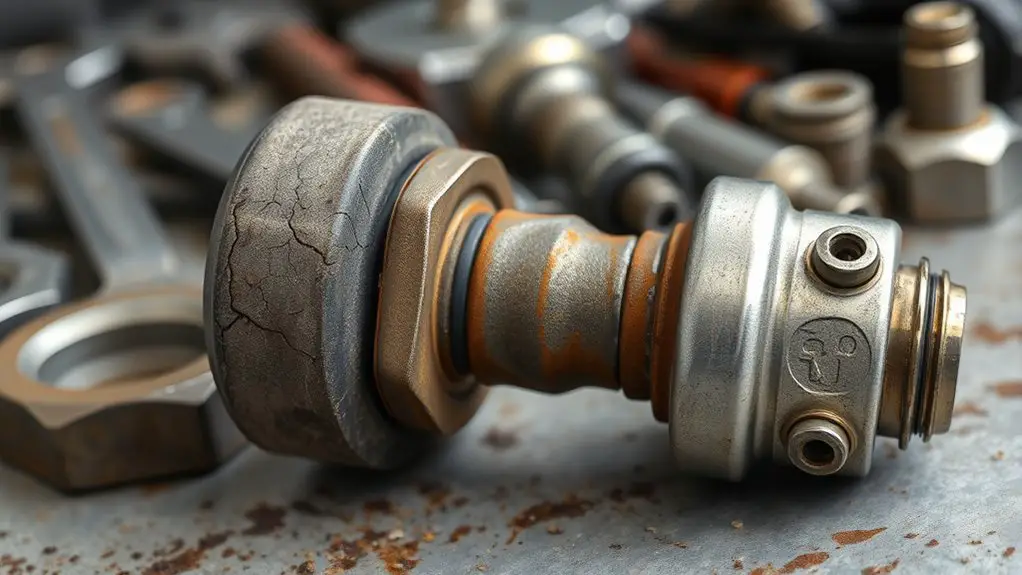
Ball joints wear down gradually as the vehicle, wheels, and suspension constantly move. You’ll notice progressive looseness, creaks, and occasional steering wander as the joints lose preload and grease. Wear happens from temperature swings, road grit, and repetitive loads that stress the ball and socket. To stay ahead, track ball joint maintenance by inspecting boots for cracks and grease seals for leaks, and listen for subtle clunks over bumps. Check wear indicators where provided; when a joint shows looseness or the indicator lights up, plan replacement before it affects alignment or tire wear. Addressing early signs reduces risks and preserves handling control. Maintain a proactive routine: clean around the joint, pump fresh grease if applicable, and replace damaged boots to prevent contamination. Remember that proper torque on fasteners and secure mounting prevents accelerated wear. You gain reliability and freedom when you replace worn components before a failure compromises safety or performance.
Misalignment Effects on Ball Joint Longevity
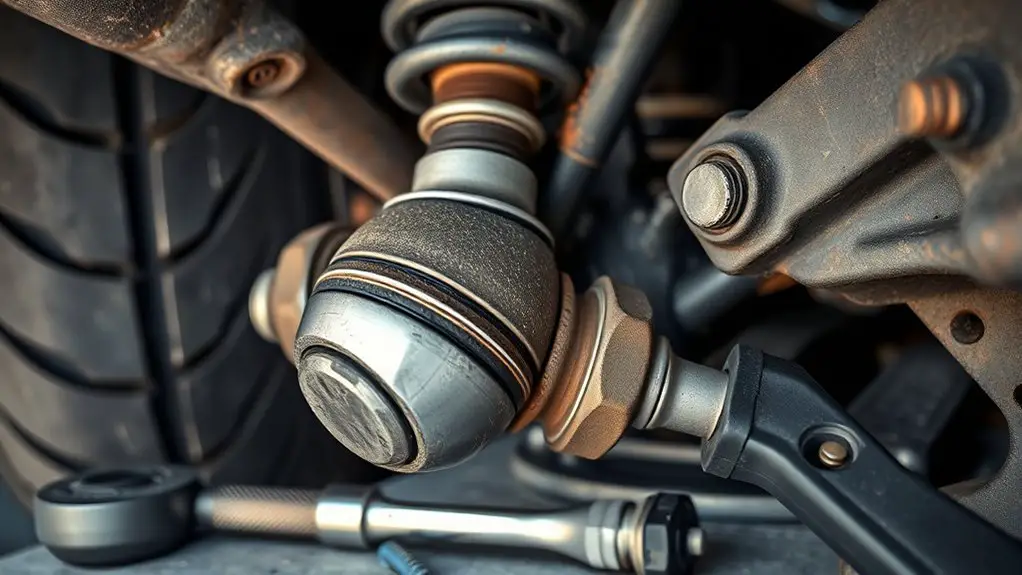
Misalignment places uneven stress on the ball joint, accelerating wear and shortening its life. When components aren’t aligned, steering effort increases and dynamic loads spike during turns, braking, and acceleration. You’ll notice subtle pulls, a off-center steering feel, or uneven tire wear as early warning signs. Precision matters here: small angles magnify fatigue, so the sooner you correct misalignment, the longer your ball joints last. Focus on routine alignment adjustments at intervals tied to routine maintenance or after impacts like potholes or curb hits. Don’t overlook suspension geometry, toe-in, and camber, which directly influence load distribution across the ball joint. Your driving habits also affect longevity; aggressive steering, high-speed cornering, and frequent rapid direction changes accelerate wear. Adopt smoother inputs, slower cornering, and regular inspections after rough roads. By prioritizing alignment corrections and mindful driving, you reduce unexpected failures and keep suspension performance consistent.
Impact of Road Conditions on Ball Joint Health
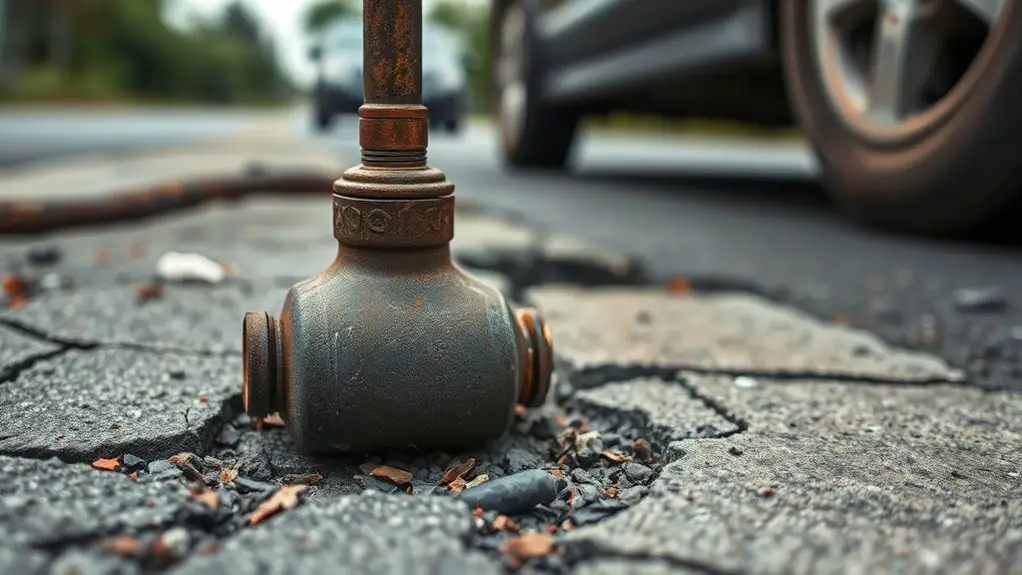
Road conditions directly affect ball joint health by imposing forces that can exaggerate wear. You feel potholes, cracks, and rumble strips as sudden jolts, then the joint endures repeated micro-bumps that loosen tiny fasteners and seals over time. Uneven surfaces demand extra articulation from suspension, increasing angular stress on the ball stud and socket. Wet, icy, or salted roads alter grip, so you compensate with sharper steering inputs, which translates into pulsing load on the joint. Rough, crushed gravel raises vibration, accelerating fatigue in the joint’s moving parts. Elevating speeds on rough pavement compounds impact, while gradual changes in surface texture create inconsistent loading cycles you might not notice until symptoms appear. Monitor road surface impact signals—unusual clunks, wandering steering, or delayed return to center—and adjust driving conditions accordingly. Maintain proper alignments, inspect boots, and address pavement-related fatigue early to protect joint integrity and maintain predictable handling freedom.
Corrosion and Contamination: Silent Killers
Small leaks or cracks let moisture and salts begin corroding the joint. Contaminants like dirt and grit in the grease trap the corrosion process and accelerate wear. To protect longevity, seal entry points, keep contaminants out of the grease, and follow regular cleaning and lubrication routines.
Corrosion Entry Points
Corrosion and contamination sneak into ball joints through several entry points, and stopping them early starts with knowing where they come from. You’ll gain control by spotting how moisture, salt, and grime breach seals, then acting fast to reinforce defenses. The goal is corrosion prevention, and it begins with entry point identification so you can seal weak spots before damage spreads.
- Ground moisture ingress at boot seams and CV joints
- Salt-soaked road debris bypassing protective shields
- Improperly sealed grease fittings drawing in contaminants
- Microcracks from stress or impact that invite rust
Stay proactive: inspect seals after trips through slush, cleanAuthority, and re-grease as needed. Prioritize clear, deliberate maintenance to keep joints reliable and freedom intact.
Contaminants in Joints
Contaminants inside ball joints quietly accelerate wear, so you’ve got to understand what sneaks in and why it matters. You’ll encounter contaminant sources ranging from road debris to dirty workshop hands, plus moisture and dust that slip past imperfect seals. Once inside, these particles act like sandpaper, abrading surfaces and breaking lubrication boundaries. The result is quicker play between the ball and socket, louder squeaks, and degraded alignment. To keep your system strong, focus on proactive joint protection: clean handling during maintenance, proper sealing, and choosing quality seals designed for your environment. Regular inspection helps you spot early intrusion before damage compounds. Stay vigilant, keep debris out, and treat contaminants as the quiet opponent that undermines performance.
Prevention and Care
Mud, water, and grit getting past seals don’t just sit there—they start corroding and contaminating your joints the moment they slip in. To keep motion smooth, focus on prevention and care that fits your freedom-driven lifestyle: stay ahead with simple routines, not heavy downtime.
- Implement routine maintenance: clean, inspect, and reseal critical joints on a predictable schedule.
- Adhere to inspection intervals: document wear, corrosion signs, and lubricant condition quarterly.
- Use proper seals and compatible lubricants to reduce exposure to moisture and grit.
- Replace worn components promptly to minimize cascade damage and preserve performance.
Lubrication: The Role of Proper Grease
Lubrication matters for ball joints because proper grease reduces wear, repels contaminants, and helps seals last longer; using the right grease and applying it correctly is a simple, effective defense against premature joint failure. You’ll want grease types that resist water washout, high-load shear, and temperature swings, so choose a calcium-sulfonate or polyurea–based formulation suited to your environment. Check manufacturer specs for consistency, NLGI grade, and2211 viscosity ranges. Before applying, clean the joint surface and re-lubricate only as needed to avoid overgreasing. Apply evenly with a seal-friendly technique, ensuring the boot remains intact and free of punctures. Track lubrication techniques like the interval cadence, budget for service intervals, and verify seals after driving through mud or salt. Don’t confuse grease with additives that claim miraculous performance; rely on proven grease types and disciplined maintenance to extend joint life and preserve handling.
Poor Installation and Fitment Issues
Improper torque specs, misalignment during install, and poor fitment tolerances can all lead to ball joint damage if ignored. If you don’t torque to spec, or you install with misalignment, you’re inviting premature wear and failure. Guarantee precise fitment and alignment from the start to keep the joint reliable.
Improper Torque Specs
Poor installation often stems from incorrect torque specs, which can hide behind snug fittings but loosen under load. You’ll protect your setup by sticking to precise settings and verified installation guidelines.
1) Check torque specs against your fasteners’ grade and material, then recheck after a test drive.
2) Use a calibrated torque wrench and clean, dry threads to avoid false readings.
3) Follow sequence patterns prescribed by the manufacturer to prevent uneven seating.
4) Document the exact torque values and conditions for future service, so you stay in control.
Misalignment During Install
Misalignment during install can silently ruin alignment and wear components prematurely, so you’ve got to catch it early. When you replace a ball joint, follow each step exactly as planned, not as you wish it to be. Verify that the steering knuckle, control arm, and hub surfaces are clean, free of burrs, and properly seated before you tighten anything. Use the correct install procedures and reference service manual tolerances to avoid smug shortcuts. Rely on precise alignment tools to confirm pinion and caster angles meet spec after install. Check threaded studs, nuts, and spacers for proper engagement and torque. If you feel resistance or misfit, stop and reassess rather than forcing parts. A careful, methodical approach preserves alignment and extends component life.
Poor Fitment Tolerances
After you’ve verified components fit and sit cleanly, the next risk is poor fitment tolerances. When parts don’t meet fitment standards, performance suffers and failures rise. You’ll pay the price through added wear, noise, and uneven load transfer, leaving you chasing symptoms instead of causes. Watch for manufacturing defects, inconsistent coatings, and sloppy machining that undermine clearance and mounting accuracy. Stay disciplined with tolerances and instruction; precision saves trouble down the road.
- Verify fitment standards before installation and after torqueing to spec.
- Inspect for manufacturing defects like chips, burrs, or gouges on mounting surfaces.
- Compare parts to OEM references or trusted aftermarket benchmarks.
- Recheck alignment and seating after initial motion to confirm clean engagement.
Excessive Load and Aggressive Driving
Excessive load and aggressive driving put extra stress on ball joints, accelerating wear and increasing the risk of failure. You’ll feel abrupt feedback when you hit bumps or curb edges, and that jolt compounds fatigue over time. Keep loads balanced and within spec; overloading your vehicle magnifies lateral forces that loosen bushings and wear joints prematurely. When you’re accelerating hard, you introduce peak loads that the suspension must absorb, stressing the ball joints beyond normal duty. Practically, avoid sudden, aggressive maneuvers and plan steadier throttle control to minimize peak accelerations. Off road driving compounds this issue: rock hops, debris, and uneven terrain push joints to their limits, especially if suspension travel is already near capacity. Regular inspection matters more when you push limits—check for play, grease leakage, and abnormal noises. If you notice looseness or creaks under load, address it early to prevent costly failures and keep your freedom to drive with confidence.
Faulty Steering and Suspension Components
Worn steering links can loosen handling and mask deeper joint wear, so check for play or stiffness in the steering, especially at low speeds. Look for distinct suspension wear patterns—uneven tire wear, noisy or rough ride—that signal components beyond the ball joints may be failing. Alignment shifts can place abnormal stress on joints, so verify caster, camber, and toe to prevent cascading damage.
Worn Steering Links
Worn steering links can quietly compromise your vehicle’s handling, causing looseness, vague feedback, and uneven steering response. You’ll notice drift, pull, or pelvic micro-adjustments as you drive, especially on uneven pavement. Addressing worn links protects steering geometry and keeps control assured. Focus on early signs and act fast to prevent wider suspension damage.
- Inspect for play and chipped ends that signal worn bushings and joints.
- Check alignment after any steering link replacement to restore precise steering geometry.
- Look for uneven tire wear indicating stretched or bent components.
- Replace in matched sets to preserve predictable handling and freedom on the road.
Suspension Wear Patterns
Suspension wear patterns reveal themselves through telltale handling changes and uneven responses, so you’ll notice looser steering, clunks, or sways when hitting bumps. You’ll also feel drifting or pull, uneven tire wear, and sporadic tire chatter as components loosen or sag. In suspension diagnostics, focus on how each element affects wheel motion and contact with the road, not just the obvious squeaks. Inspect bushings, ball joints, tie rods, and control arms for play, cracks, or leaks, and test with smooth, deliberate maneuvers. Track how weight shifts during braking and acceleration to identify hidden binding. Maintain tire alignment as a baseline, since misalignment exaggerates wear patterns and masking worn joints. Address findings promptly to preserve handling, safety, and a freer, more confident drive.
Alignment Impacts Joints
When alignment is off, steering and suspension components bear the brunt, and that misalignment can show up as uneven wear, sticky steering, or pull to one side. You’ll affect ball joints indirectly through increased load, vibration, and accelerated wear. Pay attention to alignment adjustments and how they influence joint health, then run precise joint inspections to catch early trouble before symptoms worsen.
1) Detect early wear with targeted inspection intervals
2) Check for play and binding during motion
3) Measure camber, toe, and caster to confirm alignment
4) Address steering geometry and suspension mount integrity promptly
Weather and Environmental Stressors
Weather and environmental stressors can directly accelerate ball joint wear. You’ll feel the impact when temperature swings, moisture, and debris work against moving parts. Extreme heat softens lubricants and accelerates metal fatigue, while cold tightens tolerances and invites cracking. Climate changes and seasonal effects compound wear, so adapt your maintenance cadence accordingly. Keep joints clean, dry, and protected from road salt or corrosive agents that corrode housings and boots. Regular inspections catch hidden damage caused by grit, dampness, and UV exposure that harden seals and degrade lubrication. Use quality grease, match seals to climate, and replace worn boots promptly to preserve preload and alignment.
| Condition/Action | Benefit |
|---|---|
| Clean, dry environment | Reduces abrasion and corrosion |
| Timely boot and seal replacement | Maintains lubrication and reduces moisture ingress |
Early Warning Signs That Signal Failure Risk
Early warning signs aren’t subtle: small clues can mean a big problem is looming in your ball joint. You want freedom to ride confidently, so learn the indicators and act fast. A proactive ball joint inspection saves you time, money, and risk.
- Squealing, creaking, or clunking noises with steering or bumps.
- Excessive Play or loose feel in the front wheels, especially when turning.
- Uneven tire wear or vibration transmitted through the steering wheel.
- Visible boot damage or grease leakage around the joint.
If you notice any warning signs, don’t ignore them. Schedule a quick inspection, confirm joint integrity, and address worn components before a failure traps you. Understanding the signal patterns helps you plan maintenance on your terms, not at a breakdown’s pace. Keep a routine check, stay curious, and maintain reliable control. A disciplined approach to ball joint inspection keeps your ride steadier and your freedoms intact.
Frequently Asked Questions
How Does Wheel Alignment Specifically Accelerate Ball Joint Wear?
Wheel alignment accelerates ball joint wear by causing uneven steering forces and added lateral load as you drive. When alignment is off, you introduce excessive tire scrub and uneven tread contact, increasing joint movement and stress. This wears the ball joints faster than normal, shortchanging suspension accuracy. If you’re chasing smoother handling, expect degraded ride quality and noises. Regular checks help catch wheel alignment effects before excessive tire wear compounds the issue.
Can Steering Feel Changes Indicate Hidden Ball Joint Damage?
Steering feel changes can signal hidden ball joint damage, yes. When joints wear, you may notice looseness, wandering, or odd feedback that worsens with speed. Steering sensitivity changes and vibration feedback issues are red flags you shouldn’t ignore. You’ll want a professional inspection, as misalignment or worn joints can escalate into unsafe driving. Don’t dismiss subtle shifts—addressing early can prevent costly failures and keep you in control, safely.
Do Aftermarket Parts Affect Ball Joint Life Expectancy?
Yes, aftermarket parts can affect ball joint life expectancy. Higher aftermarket quality typically lasts longer and performs closer to OEM, while cheaper options may wear faster or fail sooner. Do a performance comparison between brands, focusing on bearing tests, preload, and joint articulation. You’ll want components that resist corrosion and keep proper clearance under load. If you prioritize freedom and reliability, choose proven, well-reviewed aftermarket quality and compare performance across brands before installation.
What Role Do Subframe Rust and Corrosion Play?
Subframe rust accelerates ball joint wear by compromising mounting points and alignment. You influence this through subframe maintenance and timely corrosion prevention. Inspect for rust, treat early, and replace severely corroded members to preserve proper steering geometry. Keep protective coatings refreshed and drain areas where water stagnates. If you park outside, regularly wash undercarriage to remove salt and grit. By prioritizing corrosion prevention, you extend joint life and preserve vehicle handling and safety.
Can Lifting or Lowering a Vehicle Impact Joint Longevity?
Raising or lowering your ride can change stress on joints, so yes, it can impact joint longevity. When you alter ride height, you shift suspension geometry and angles, increasing leverage on ball joints and tie rods. You’ll want careful wheel alignment and regular joint maintenance. Statistically, improper alignment alone can double tire wear in 6 months. Keep your vehicle suspension components checked, and address play or noise early to preserve performance and safety.

